The spiral is the age-old intuitive symbol of spiritual development and our identity with the universe. It represents life, creation, birth and rebirth, evolution, awareness, and growth or development. It is found in cultures all over the world and reflected in shamanism, serpent cults, dragon lore, geomancy, magic, mysticism and ritual art and dance throughout history.
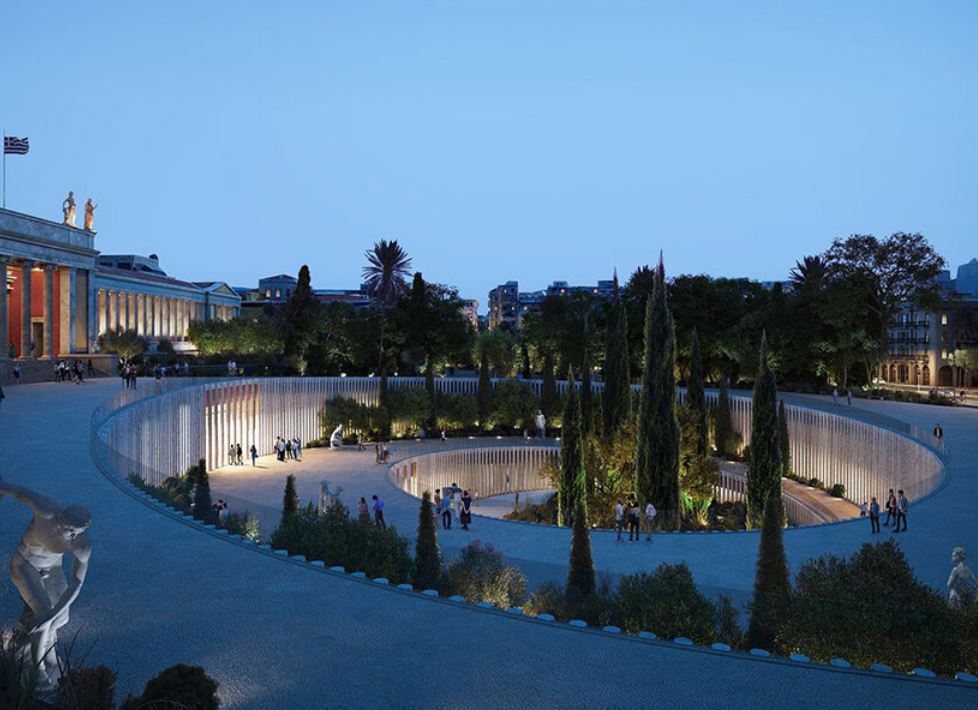
Although the proposal for the expansion of Athens’ National Archaeological Museum (NAM) developed by international studio OMA in collaboration with Greek practice RS SPARCH lost the competition to the design by David Chipperfield Architects, it is definitely worth taking a closer look – and mostly because of the spiraling geometries it was inspired by. The original Neoclassical building of NAM, which is famous with its extensive collection of Greek antiquities, was built by German architects Ernst Ziller and Leopold Lange back in the 19th century.
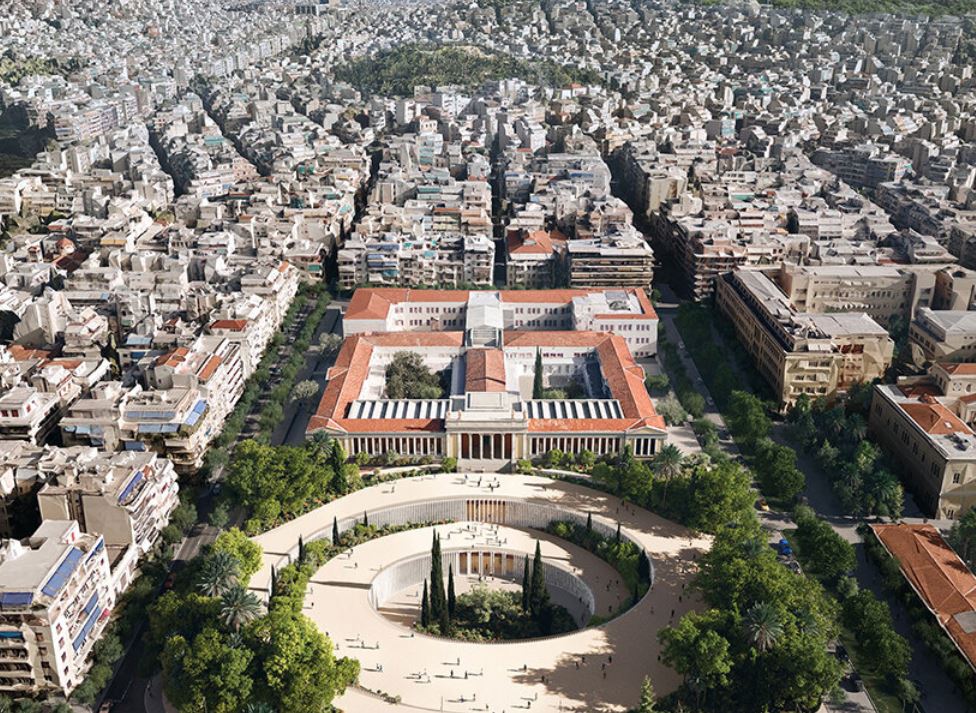
Athens’ National Archaeological Museum by OMA and RS SPARCH (also header image)
Dubbed the ‘Helix’, the classically shaped, yet modern addition serves as a new entrance to the museum. The concept envisions the sculptural volume of the new galleries of NAM carved into the earth. Spiralling around a sunken garden, they lead visitors to a central opening where an ancient olive tree nestles, evoking the spirit of ancient days, evoking the spirit of ancient days. The proposal plays with the concept of ἐξέλιξις (exélixis) – the Ancient Greek word describing the idea of evolution – in both its physical manifestation and its allegorical relationship to the existing Neoclassical building.
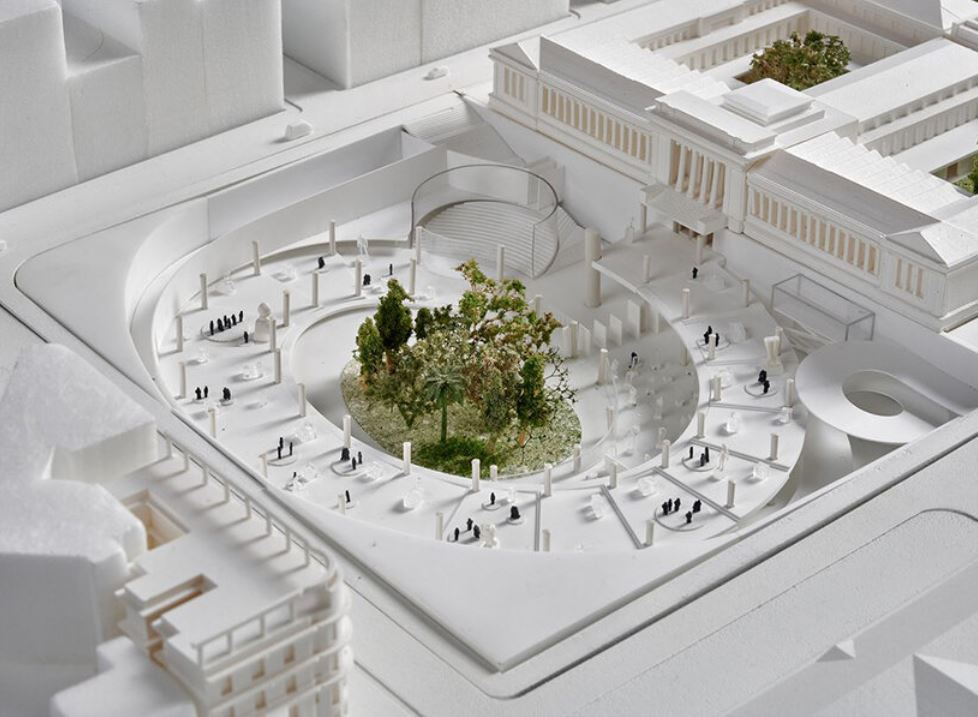
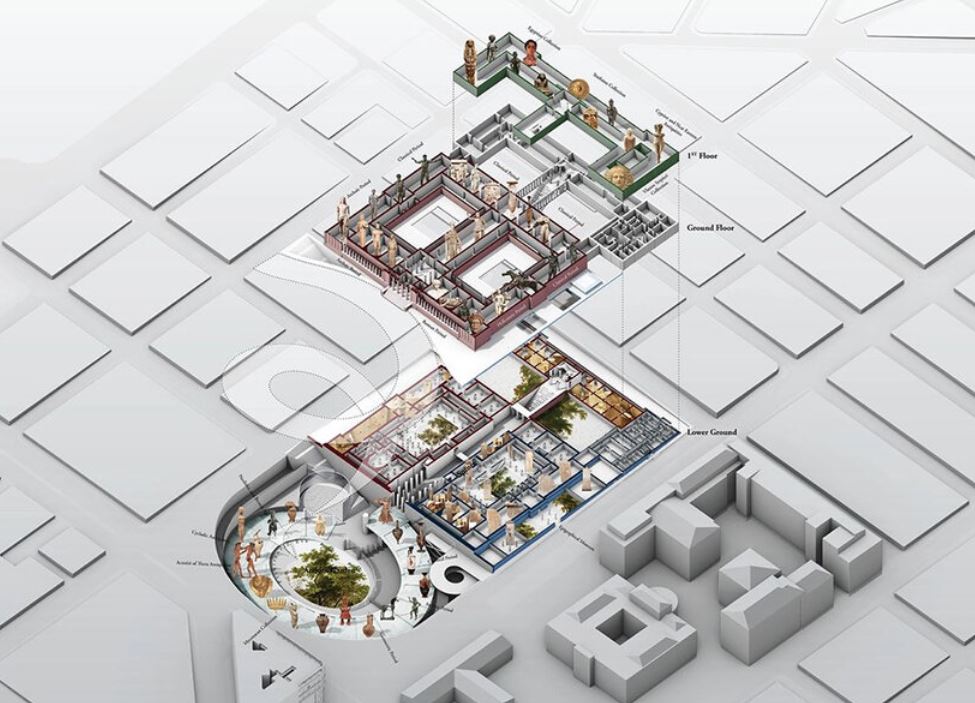
Athens’ National Archaeological Museum by OMA and RS SPARCH
The act of arrival to the museum is conceived as an experience, with the movement of queuing visitors facilitated by the gentle ramp. The Helix includes a new entrance foyer, an auditorium, the garden café, space for temporary exhibitions, and 4,600 square meters of gallery space for the expansion of the permanent collection.
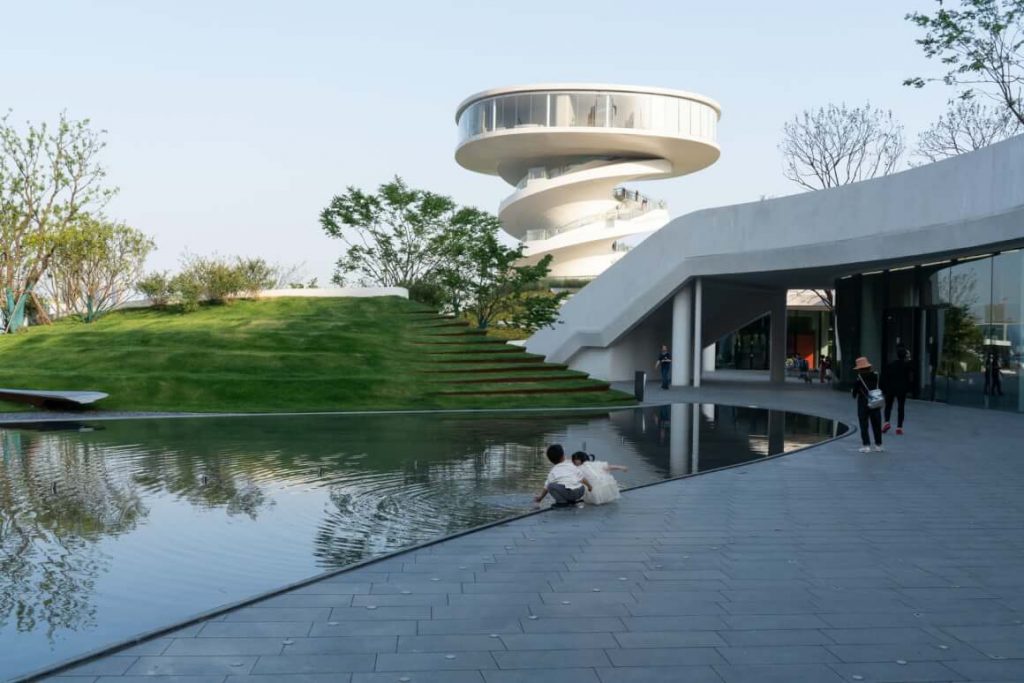
Nanchang Waves by Nordic Office of Architecture
Located on the shore of the Xianghu Wetland, Nanchang Waves designed by Nordic Office of Architecture derives its concept from the surrounding waterscapes. The water forms and personalities, as described in “Twelve Waters” by Ma Yuan from the Southern Song Dynasty (1127-1279), include turbulent, still or spiral, which are transformed as spaces in the design.
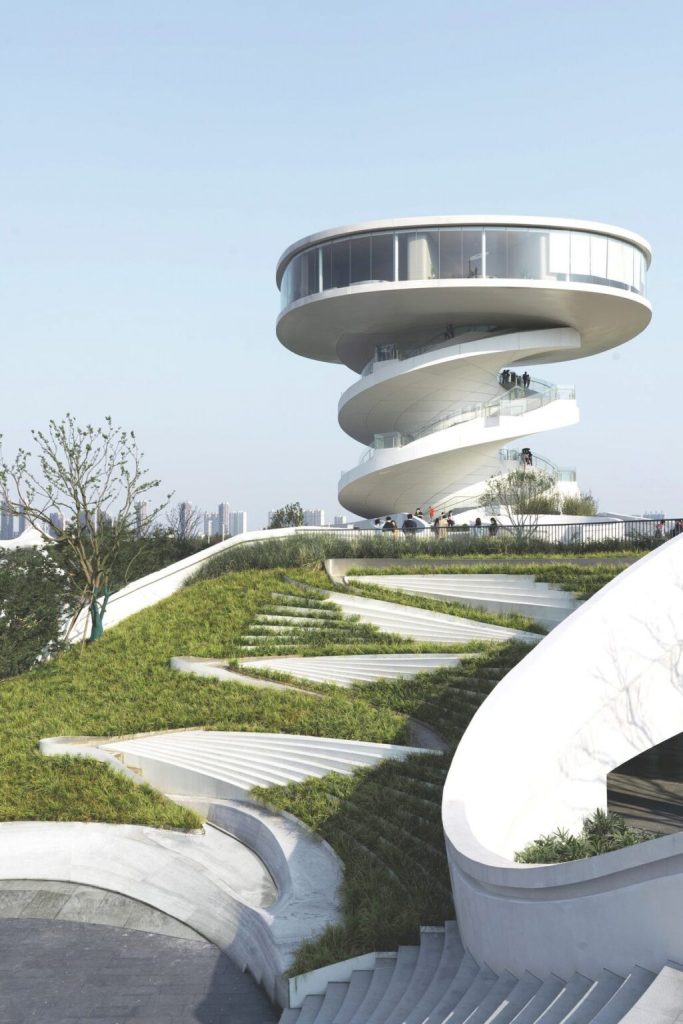
Nanchang Waves by Nordic Office of Architecture
The project includes arenas for events, cafés, galleries and urban agriculture gardens for the neighborhood schools. The viewing tower and surrounding public realm create versatile and welcoming spaces that enhance and connect the urban context to the natural landscape of the region.
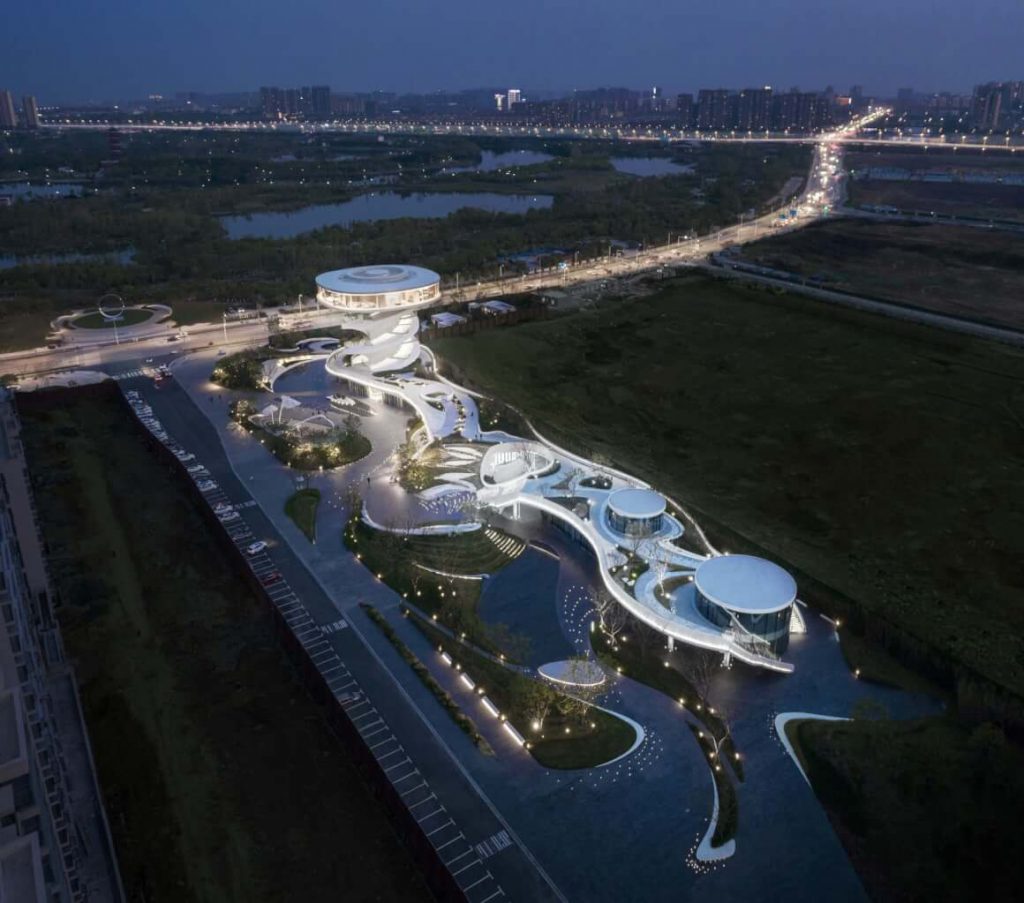
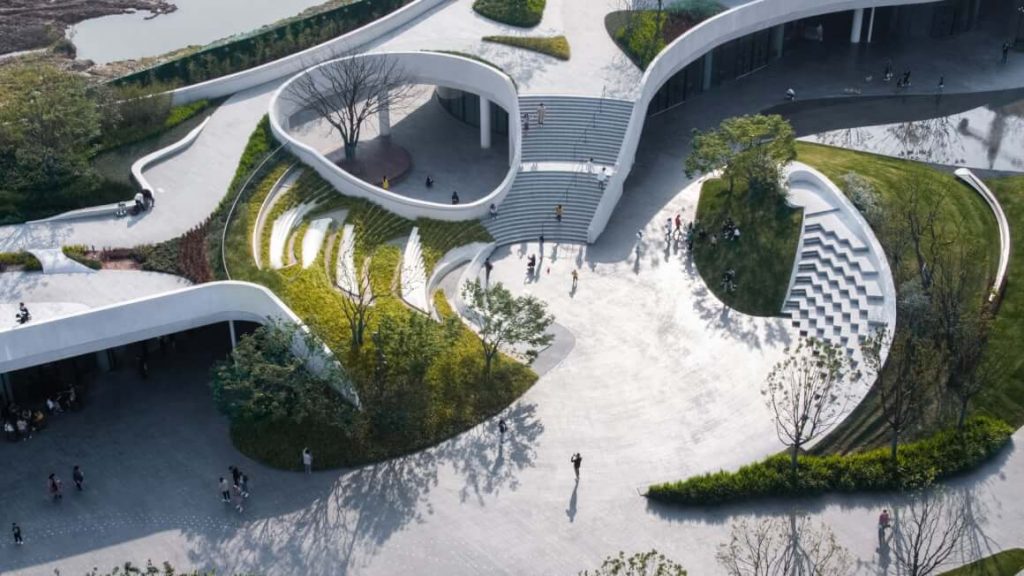
Nanchang Waves by Nordic Office of Architecture
Zhu Yufan and Y³C Atelier designed the landscape for the project introducing a dense waterfall to the reflect buildings. Serving as an interactive water curtain it extends the shopping space into a comprehensive cultural venue for social gathering, leisure and entertainment.
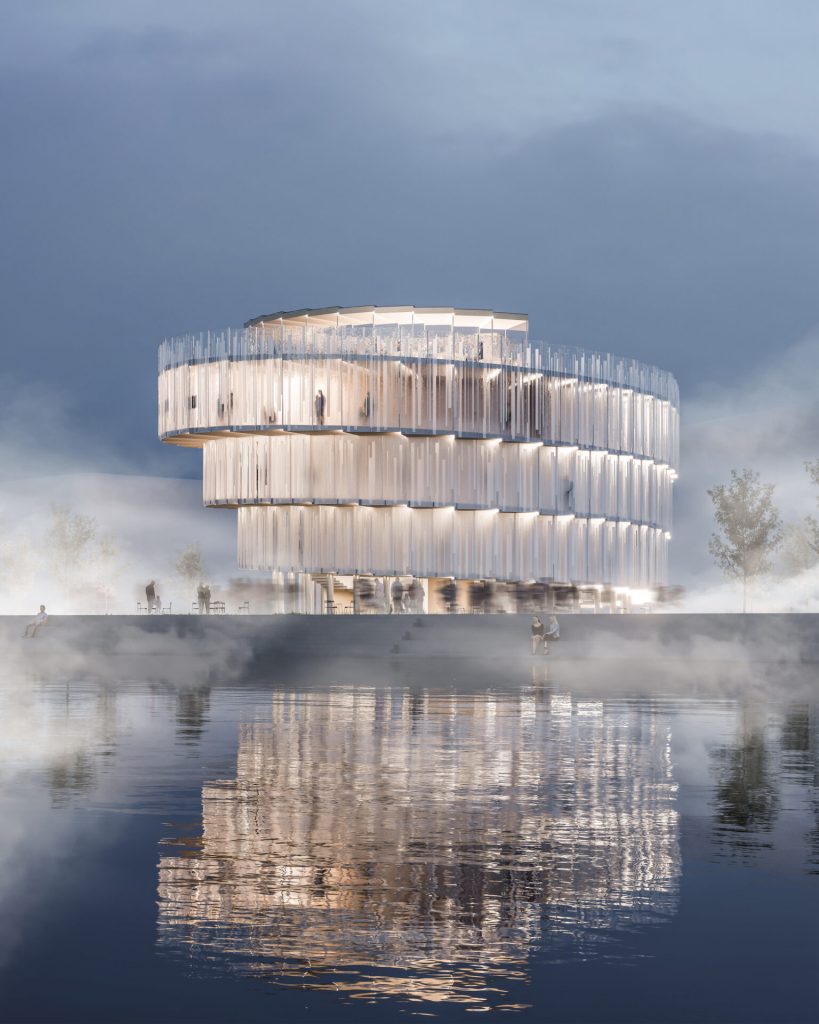
Czech pavilion for The World Expo 2025 by Apropos Architects
Called ‘Sculpting Vitality’, the winning proposal for the Czech pavilion at The World Expo 2025 in Osaka, Japan, designed by international studio Apropos Architects, comprises a barrier-free ramp that doubles as exhibition space, spiraling upwards around the conceptual centerpiece. The width of the ramp varies between two and seven meters, and the exhibition space occupies an area of around 400 sqm. At the top, the spiral ends on a terrace hosting a restaurant and bar. Fostering visitors into physical activity through continuous motion, the dynamic spiral movement upwards serves as an allegory of the ideal life path.
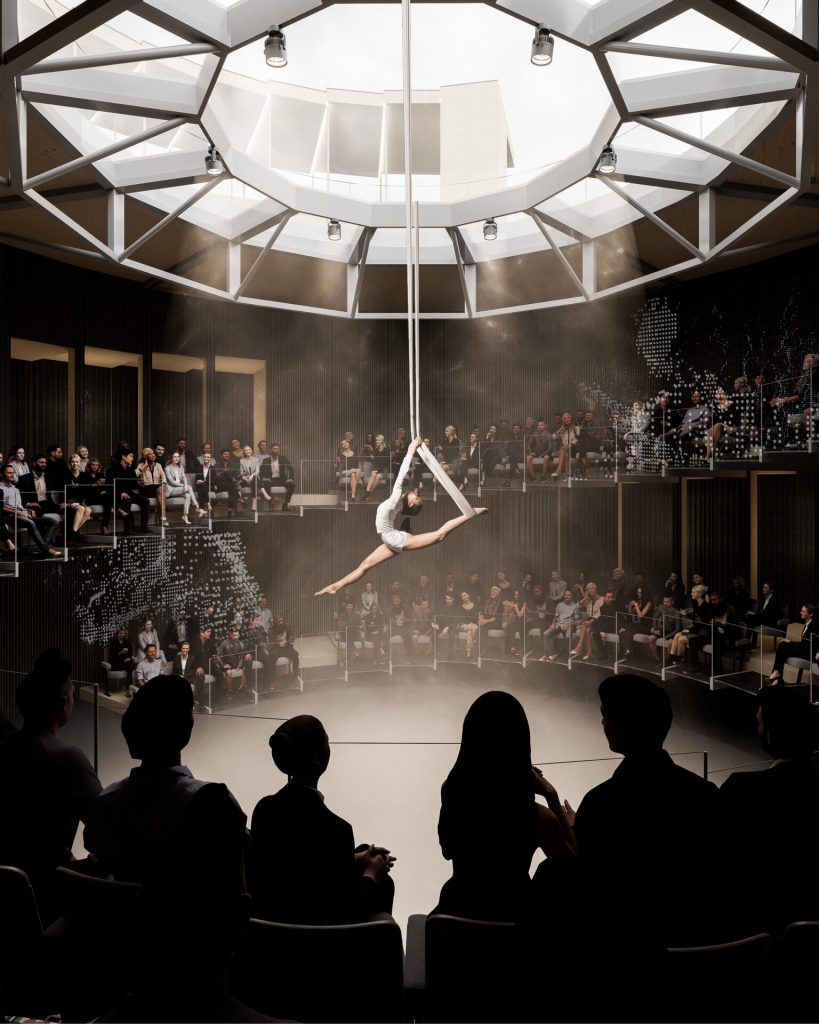
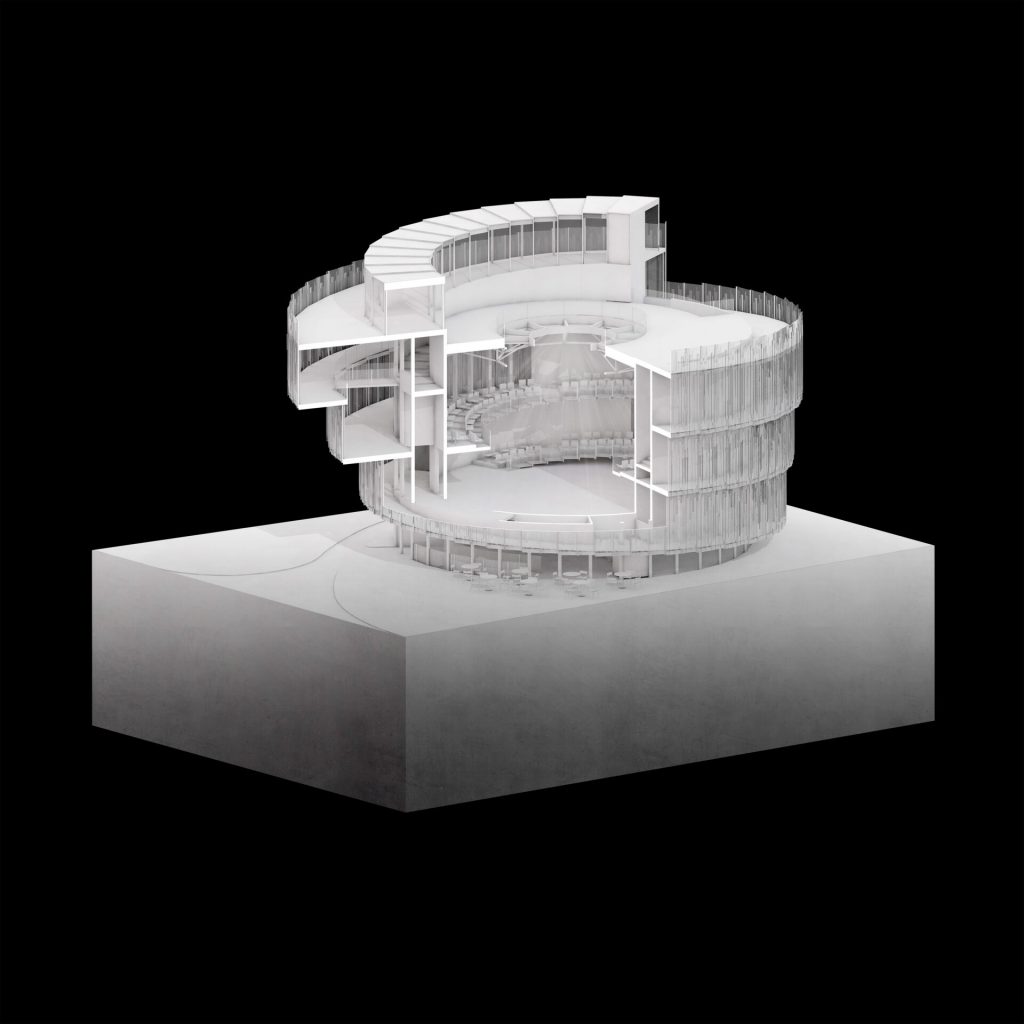
Czech pavilion for The World Expo 2025 by Apropos Architects
Wrapped around a central auditorium, the glazed transparent sculpture pays homage to the rich history of glassmaking in the Czech Republic. The artificial light throughout the interior gives the structure a delicate glow that makes it shine from the outside.
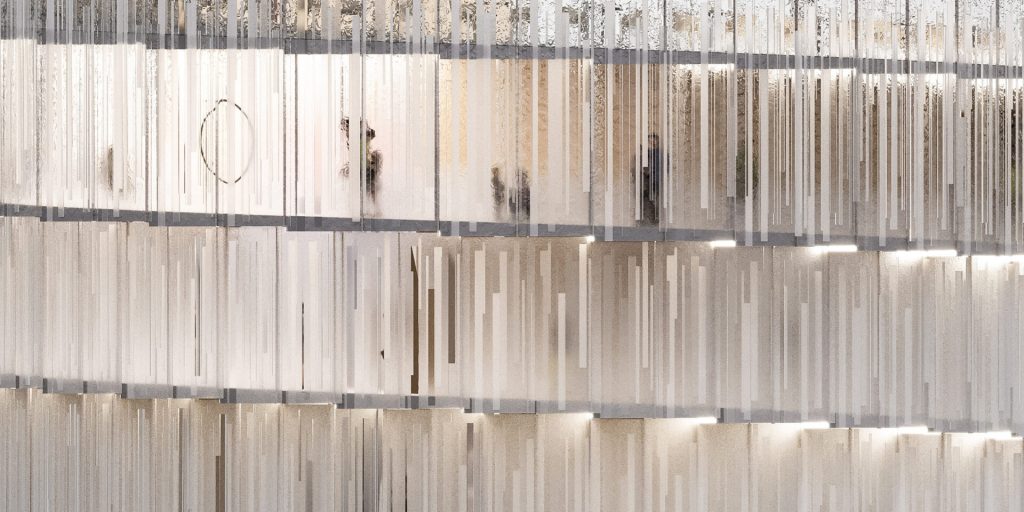
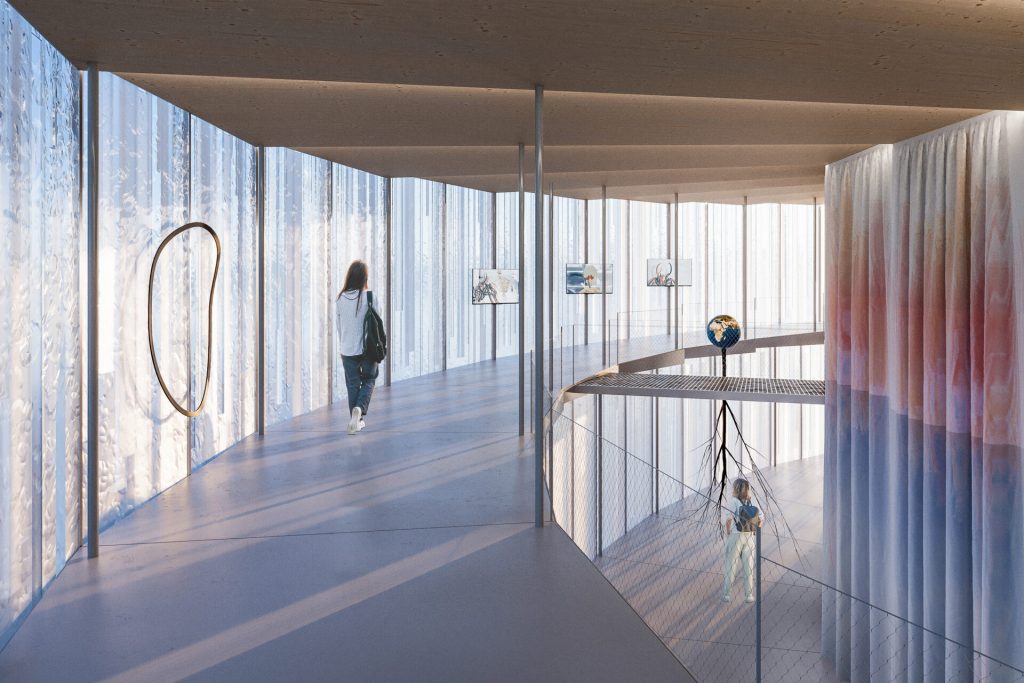
Czech pavilion for The World Expo 2025 by Apropos Architects
The conceptual idea of the load-bearing structure is a regular framing system of CLT wooden panels, which form a continuous structure consistently adhering to the chosen concept in the form of a spiral exhibition ramp, divided into thirty-six segments within a single turn around the auditorium. Regularly divided segments ensure sufficient construction readiness, demountability, and transportability. Due to the construction complexity of the pavilion, the design team foresees the pre-fabrication of most parts in the Czech Republic, prior to the assembly on-site after transport to Japan.